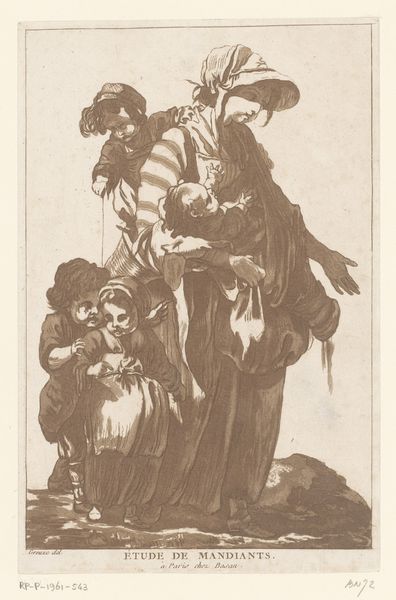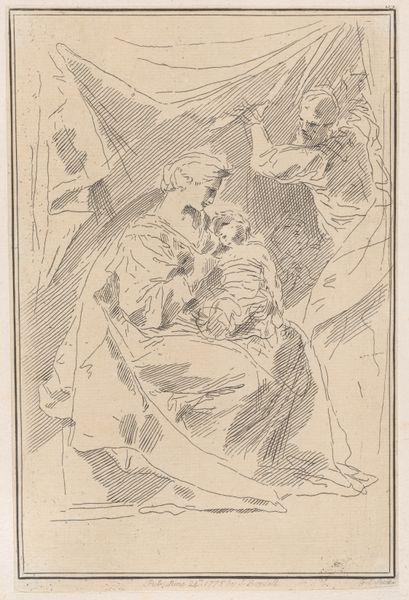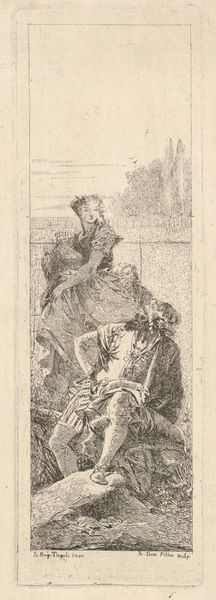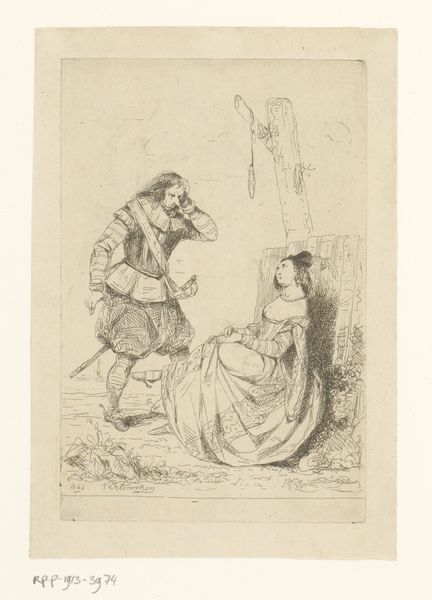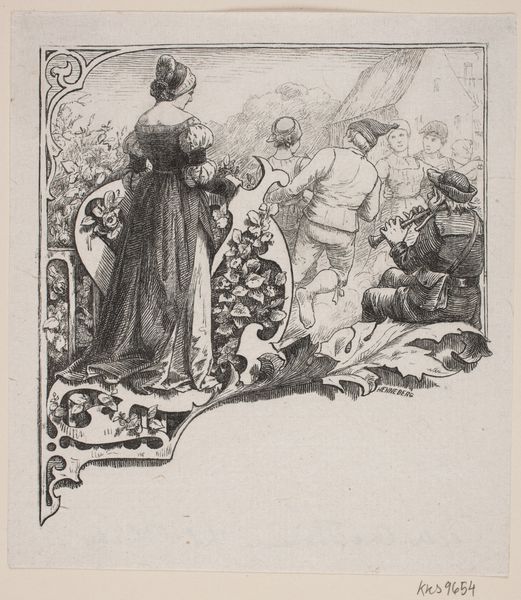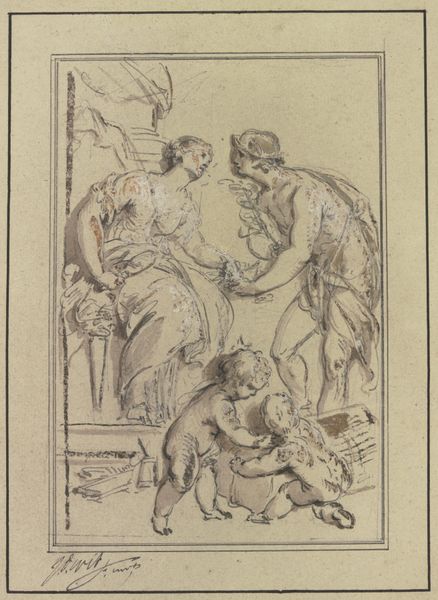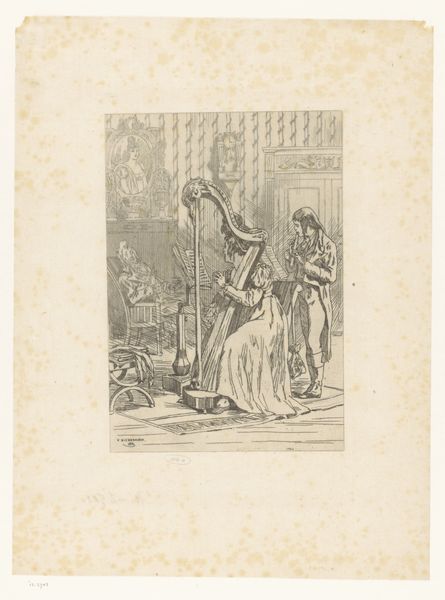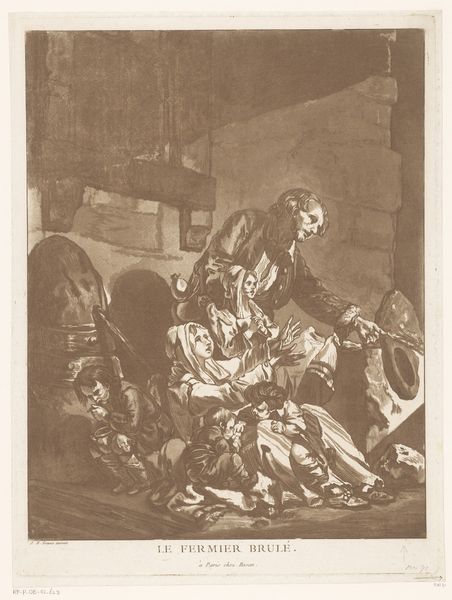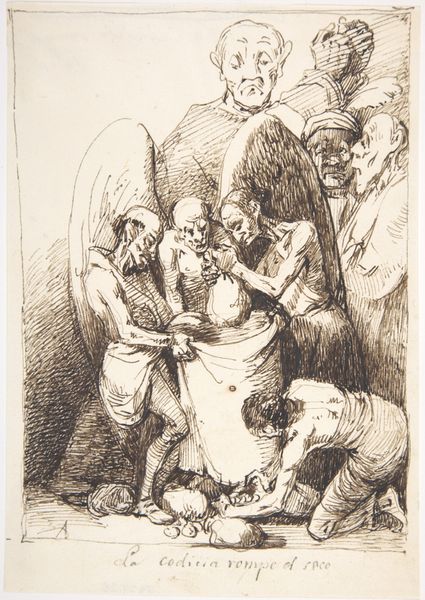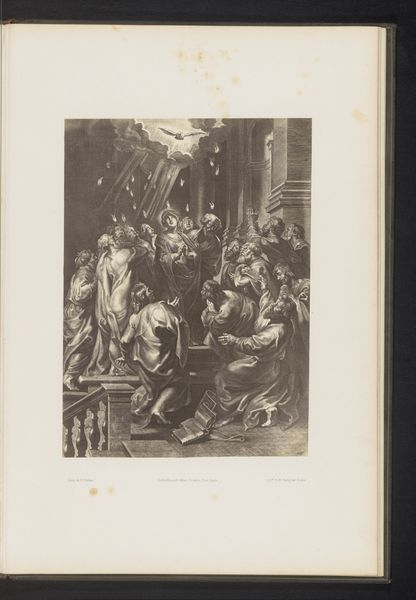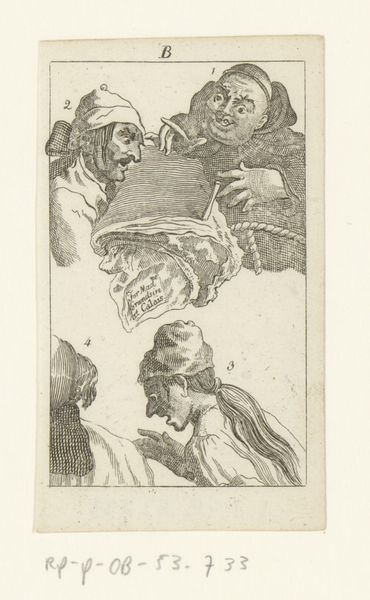
Dimensions: height 144 mm, width 90 mm, height 172 mm, width 113 mm
Copyright: Rijks Museum: Open Domain
Editor: Here we have a reproduction of what is thought to be a drawing titled "Valentijn's Death" from 1878. It appears to be charcoal, or a print of a charcoal drawing. It's quite striking, almost theatrical in its composition. What stands out to you? Curator: It immediately evokes the Romantic era's fascination with dramatic narratives and moral dilemmas. Consider the power dynamics at play. A woman kneels, seemingly in prayer, while a man is on the ground facing his executioners. What sociopolitical narratives might be embedded in this staging of justice? Is she praying *for* him, or against him? What power did women have during this era? What possibilities were foreclosed? Editor: That’s a really interesting point about power. It does seem like she is in a very vulnerable position. I hadn’t really considered the details like who she may be praying for and its relationship to their places in society. Curator: Exactly. Now, think about who has been memorialized throughout the course of art history. What kind of class, racial and gendered power does this implicit artistic selection exert? Also, let's observe the executioner's gaze. Does his expression convey duty, remorse, or something else entirely? This work reflects how the artist chose to frame those holding positions of power. How do such framings reflect anxieties of that particular era? Editor: I see. So, by examining these kinds of images, we’re really unpacking the social and political assumptions that were prevalent during this period, and considering whose stories get told – and how? Curator: Precisely. And more importantly, reflecting on how this image and its cultural context impact and influence present-day modes of thinking. Editor: I learned a lot by focusing not just on the visual elements, but how those relate to larger historical power structures and gender roles. Curator: And I have, too, thinking more critically about the modern relevance of these historical frameworks.
Comments
No comments
Be the first to comment and join the conversation on the ultimate creative platform.

